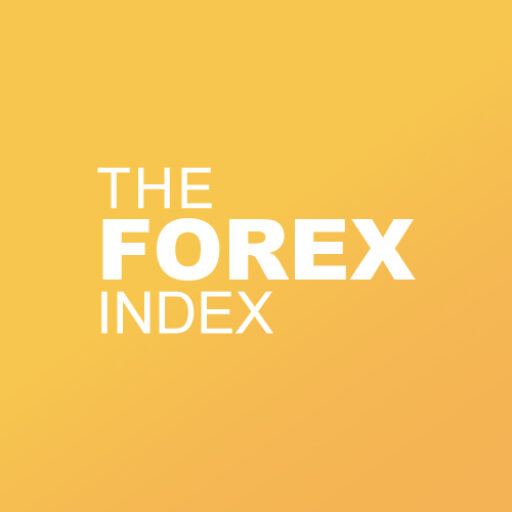Forex trading is a realm that intrigues many but is truly understood by only a few. One essential aspect of becoming a successful forex trader is understanding forex charts, those dynamic tools that convey the heartbeat of the currency market. Let’s explore how to read and interpret forex charts, focusing on currency pair trends, time frames, and essential indicators.
Understanding Forex: A Quick Recap
Before we dive into forex charts, let’s do a quick refresher on forex trading. Foreign exchange, or forex, is the marketplace for buying and selling currencies. With a daily trading volume exceeding $5 trillion, it’s the world’s largest and most liquid financial market. As a forex trader, you trade currency pairs, betting on the rise or fall of one currency against another. But to make these decisions, you need to understand and interpret forex charts.
Getting Acquainted With Forex Charts
Forex charts are graphical representations of the price movements of a currency pair over a specific period. They provide traders with a visual tool to analyze market trends and make informed trading decisions. Forex charts include three primary types: line charts, bar charts, and candlestick charts.
Line Charts
The simplest form of forex charts is the line chart. It represents the closing prices for a currency pair over a set time. This form is excellent for beginners as it provides a clear, undiluted view of price movement.
Bar Charts
A bar chart offers more detailed information, including the opening price, closing price, and the highs and lows during a specific time frame. Each bar represents a unit of time. The top of the bar shows the highest price, the bottom represents the lowest, and the horizontal lines on either side represent the opening and closing prices.
Candlestick Charts
Candlestick charts, originally from Japan, offer the same information as bar charts but in a more visually compelling format. The main part, known as the “body,” represents the opening and closing prices, while the “wicks” or “shadows” show the highs and lows.
Time Frames: The Pulse of the Market
Forex charts can be set to various time frames — from one minute to one month. The choice of time frame depends on your trading strategy. Day traders often use shorter time frames (like 1-minute or 5-minute charts), while long-term traders use longer ones (like daily or monthly charts).
Decoding Forex Charts: Essential Indicators
Now that you understand the basic structure of forex charts, it’s time to learn about the indicators.
Trend Lines
Trend lines are straight lines drawn on a chart that connect two or more price points. An upward trend line, or bullish trend, indicates increasing prices, while a downward trend line, or bearish trend, shows decreasing prices.
Moving Averages
Moving averages (MAs) smooth out price data by creating a constantly updated average price. The most commonly used MAs are the simple moving average (SMA) and the exponential moving average (EMA). MAs can help identify trends and potential reversal points.
Volume
Volume represents the number of shares or contracts traded in a security or market during a given period. High volume often corresponds to increased market activity, leading to price changes.
Relative Strength Index (RSI)
The RSI measures the speed and change of price movements. An RSI value above 70 signals an overbought market condition, while a value below 30 indicates an oversold condition.
Key Takeaways: Your Road to Forex Mastery
Understanding forex charts is a vital skill in forex trading. By learning to interpret line charts, bar charts, and candlestick charts, along with understanding the significance of time frames and indicators like trend lines, moving averages, volume, and the RSI, you can make more informed trading decisions.
Forex trading is both science and art. While these tools provide valuable insights, remember that market conditions can change rapidly. Always stay updated, practice risk management, and never stop learning.
Grasp the art of reading forex charts, and you’re well on your way to becoming a seasoned forex trader. Remember, knowledge is power, especially in the world’s largest financial market.
Forex Chart Patterns: The Heart of Technical Analysis
Forex chart patterns are foundational elements of technical analysis. They can be observed across all time frames and currency pairs, signaling potential future price movements.
Double Tops and Bottoms
Double tops form after an uptrend and signify potential downtrends. The pattern resembles the letter ‘M’. In contrast, double bottoms emerge after a downtrend and indicate potential uptrends. This pattern resembles the letter ‘W’.
Head and Shoulders
The head and shoulders pattern is another crucial reversal signal. It comprises three peaks — the left shoulder, the head, and the right shoulder. The pattern forms during an uptrend and predicts a possible downtrend.
Triangles
Triangles are continuation patterns and can be ascending, descending, or symmetrical. They signal a price breakout where the price could move in either direction.
Forex Indicators: Advanced Tools for Forex Charts
Let’s delve deeper into some of the more advanced forex indicators used by experienced traders.
Fibonacci Retracement
Fibonacci retracement involves horizontal lines that indicate where possible support and resistance levels are likely to occur. They are based on Fibonacci numbers, a sequence discovered by the Italian mathematician, Leonardo Fibonacci.
Bollinger Bands
Bollinger Bands comprise three lines — the middle line (SMA), an upper limit, and a lower one. These bands expand and contract based on market volatility.
MACD
The Moving Average Convergence Divergence (MACD) is a trend-following momentum indicator that shows the relationship between two moving averages of a security’s price.
Mastering Forex Chart Analysis
Analyzing forex charts involves more than just recognizing patterns and indicators. It requires understanding market sentiments and being aware of economic events that could impact currency prices.
Fundamental Analysis
In addition to technical analysis, fundamental analysis is crucial for understanding forex charts. It involves evaluating economic indicators such as inflation rates, GDP growth, and employment figures that impact a country’s currency value.
Economic Calendar
An economic calendar is a useful tool for any forex trader. It provides information about major economic events that can significantly affect currency prices and allows traders to make informed decisions.
Trading Psychology
Understanding forex charts also involves understanding your own trading psychology. Emotional discipline is crucial when trading, as emotional decisions often lead to costly mistakes.
Harnessing Technology: Forex Trading Platforms
Technological advancements have simplified the process of reading and interpreting forex charts. Today, many platforms provide real-time charting tools, indicators, and automated trading systems.
MetaTrader 4 and 5
MetaTrader 4 and 5 are among the most popular forex trading platforms. They offer advanced charting tools, numerous built-in indicators, and even allow algorithmic trading.
TradingView
TradingView is a versatile trading platform known for its intuitive design and powerful charting features. It also provides a platform for traders to share their ideas and insights.
Mastering forex charts can seem daunting initially, but with perseverance and practice, it becomes an indispensable skill for every trader. Stay curious, stay disciplined, and remember that every successful trader was once a beginner. Happy trading!


